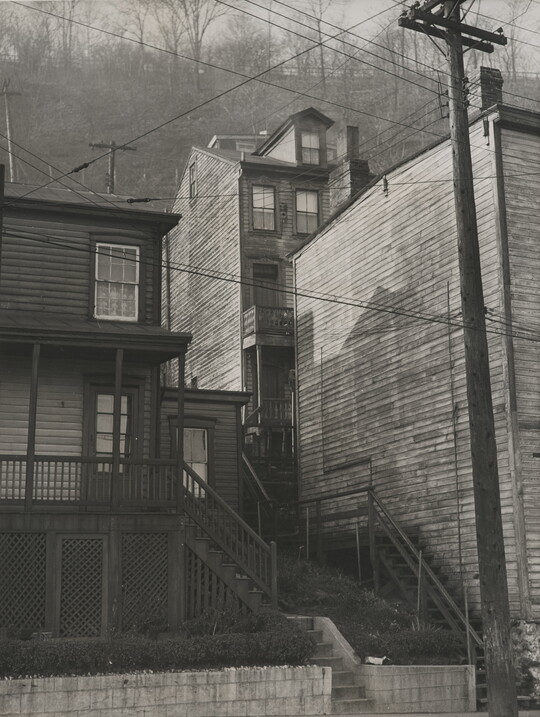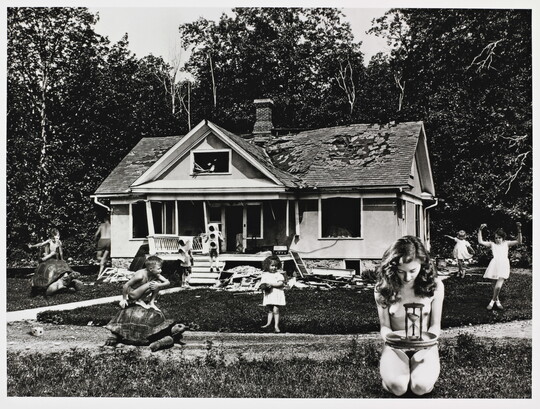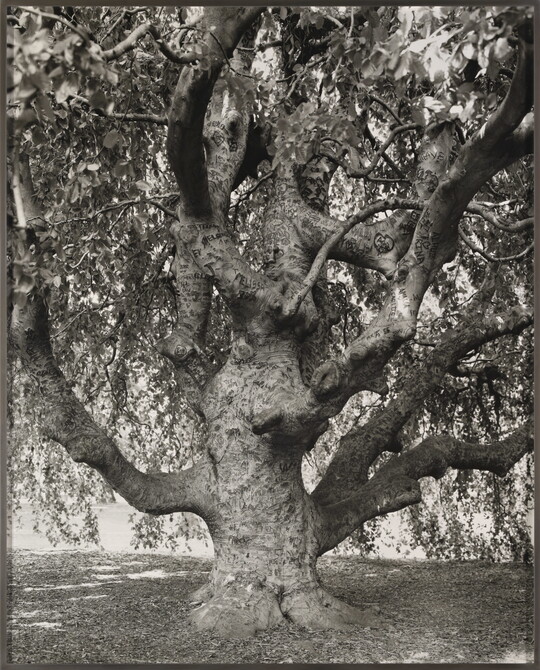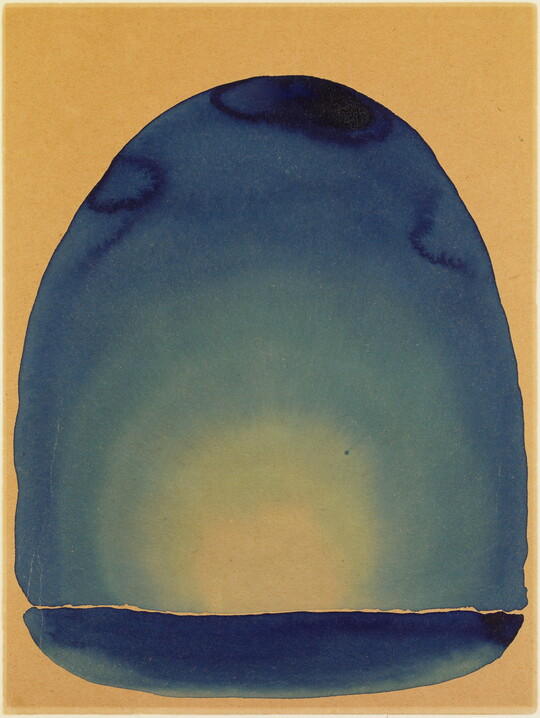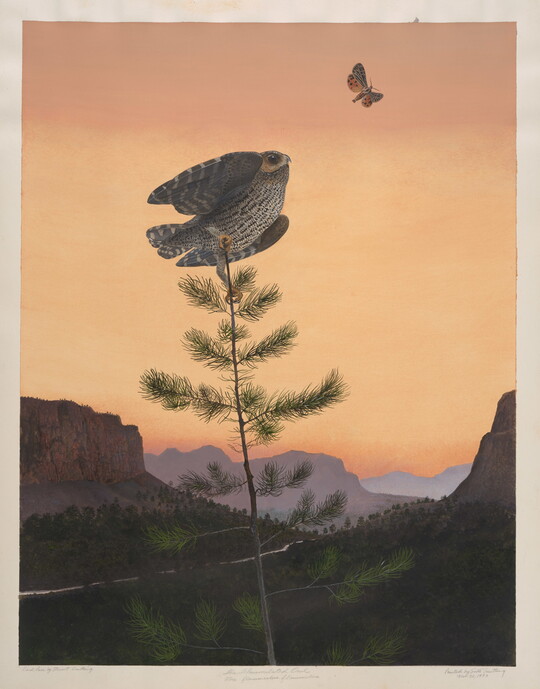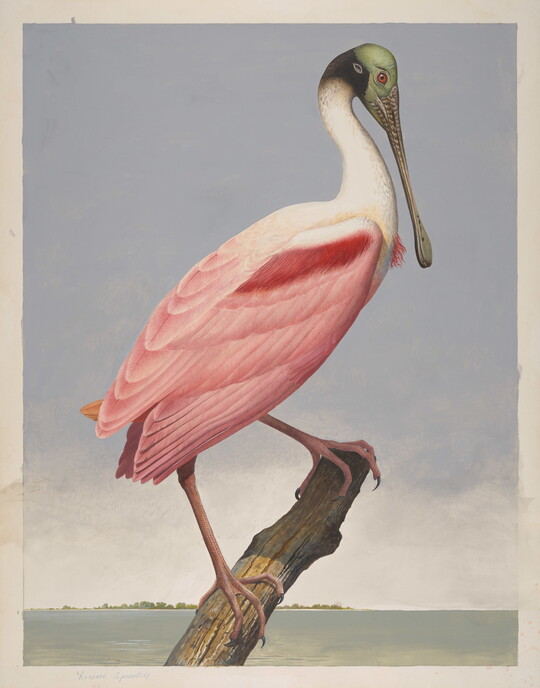


Artwork Images
Photo:
Controls
Untitled
Object Details
-
Date
1943
-
Medium
Tempera, transparent watercolor, crayon, and ink on paper
-
Dimensions
17 11/16 x 23 7/8 in.
-
Inscriptions
Recto:
l.c.: VII.18.43.HH
Verso:
along lower edge, in ink: M667-4/SP8
along lower edge, in graphite: 287 D
-
Credit Line
Amon Carter Museum of American Art, Fort Worth, Texas, Gift of Ruth Carter Stevenson
-
Accession Number
2008.48
-
Copyright
© Estate of Hans Hofmann / Artists Rights Society (ARS), New York
Additional details
Location: Off view
See more by Hans Hofmann
Tags
-
Why might an artist choose to abstract a scene rather than to create a more representational, or realistic, depiction?
In what ways do color, line, and shape affect the mood of a work of art?
How do artists create a sense of movement, motion, or action in their artworks?
How might a work of art reflect an artist’s or a community’s lived experiences?
-
Describe what you see. Pay special attention to lines and shapes.
Do the shapes you see remind you of anything? What?
Think of some verbs that describe the actions you see in the painting. For example: rising, lifting, swooping, dashing, swirling. How does motion express emotion?
Notice the colors. The artist has used colors that are contrasting and opposite each other (use a color wheel to demonstrate this). Have the students use a color wheel so they can see other complimentary colors. How might changing the colors of this composition change the way it feels?
How does this work of art make you feel?
What were audience responses to abstract art at the time it was made? How have those responses changed over time?
-
All Levels
Students will create a work of art that will give a viewer a sense of movement and motion. They should think about which colors to use and the lines that show that feeling. Students may want to use a color wheel to look at other color combinations (complimentary, analogous, monochromatic, etc.). They may choose the materials to use—paint, markers, colors, chalk, or colored pencils.
Share Educator Resources
Amon Carter Disclaimer
This information is published from the Carter's collection database. Updates and additions based on research and imaging activities are ongoing. The images, titles, and inscriptions are products of their time and are presented here as documentation, not as a reflection of the Carter’s values. If you have corrections or additional information about this object please email us to help us improve our records.
Every effort has been made to accurately determine the rights status of works and their images. Please email us if you have further information on the rights status of a work contrary or in addition to the information in our records.
Related Works
-
Pink Cyclamen, ca. 1875
Fidelia Bridges
Transparent and opaque watercolor heightened with gum glaze and graphite on paper
1982.49
-
Black-crowned Night Heron, 1983
Scott Gentling, Stuart Gentling
Graphite, opaque and transparent watercolor on paper
2018.14
-
Untitled (Pittsburgh Housing), 1930s
Manuel de Aumente
Gelatin silver print
P2009.11
-
Drawing No. 18, 1919
Georgia O'Keeffe
Charcoal on paper
1997.2
-
The Time Game, 2011
Jane Hammond
Gelatin silver print
P2011.29
-
Weeping Beech, Brooklyn Botanic Garden, Brooklyn, 2011
Mitch Epstein
Gelatin silver print
P2012.13
-
Light Coming on the Plains No. II, 1917
Georgia O'Keeffe
Watercolor on newsprint paper
1966.32
-
Flammulated Owl, 1983
Scott Gentling, Stuart Gentling
Graphite, opaque and transparent watercolor on paper
2018.24
-
Roseate Spoonbill, ca. 1980-85
Scott Gentling, Stuart Gentling
Graphite, opaque and transparent watercolor on paper
2018.26




